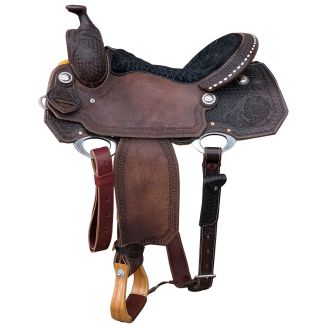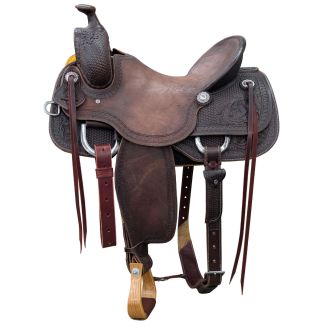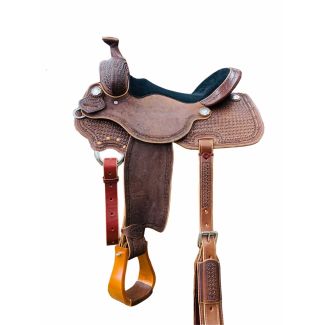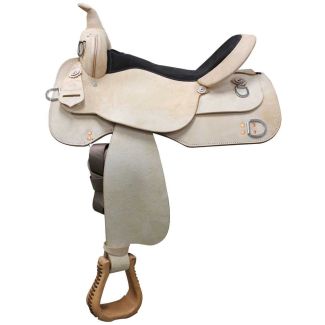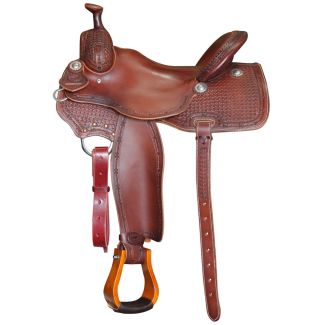Training & Work Saddles
Training saddles are specifically designed for horse training purposes. They are typically lighter and more flexible than regular saddles to allow for greater freedom of movement and communication between horse and rider. Some common features of training saddles include:
1. Close contact design: Training saddles often have a close contact design, which means they provide a minimal barrier between the rider and the horse. This allows for better communication and aids in the rider's ability to feel the horse's movements.
2. Lighter weight: Training saddles are often lighter in weight compared to other saddles to allow for greater agility and flexibility during training sessions.
3. Wide gullet: A wide gullet provides adequate clearance for the horse's spine, allowing for more comfort and freedom of movement.
4. Flexible tree: Many training saddles have a flexible tree, which allows the saddle to conform to the horse's movements and provides a more comfortable fit.
5. Adjustable panels: Training saddles often have adjustable panels that can be padded or altered to accommodate the horse's changing shape or musculature during training.
6. Rider support: Training saddles often have features like knee blocks or thigh rolls to provide extra support and stability for the rider during training exercises.
It is important to keep in mind that not all training saddles have the same features. The design and features of a training saddle can vary depending on the specific discipline or training method it is intended for. It is always recommended to seek professional guidance or consult with a saddle fitter to ensure the best fit and function for both the horse and rider.

